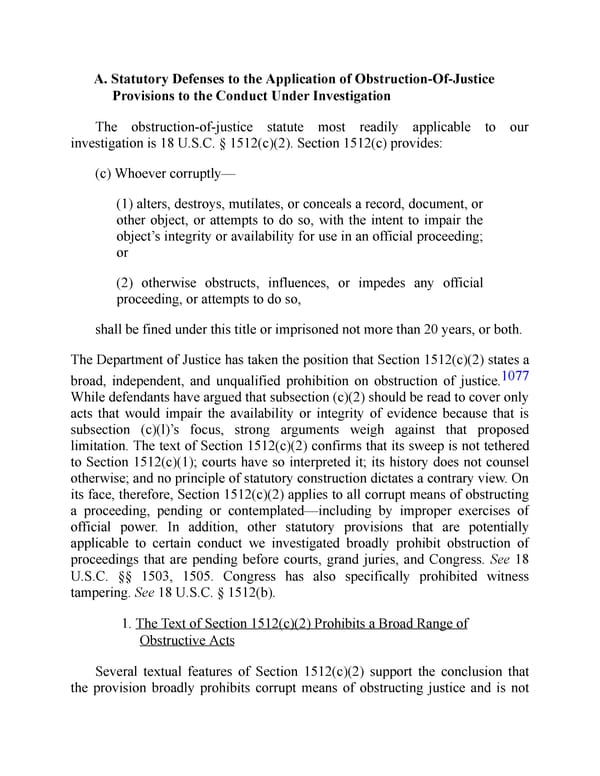A. Statutory Defenses to the Application of Obstruction-Of-Justice Provisions to the Conduct Under Investigation The obstruction-of-justice statute most readily applicable to our investigation is 18 U.S.C. § 1512(c)(2). Section 1512(c) provides: (c) Whoever corruptly— (1) alters, destroys, mutilates, or conceals a record, document, or other object, or attempts to do so, with the intent to impair the object’s integrity or availability for use in an official proceeding; or (2) otherwise obstructs, influences, or impedes any official proceeding, or attempts to do so, shall be fined under this title or imprisoned not more than 20 years, or both. The Department of Justice has taken the position that Section 1512(c)(2) states a 1077 broad, independent, and unqualified prohibition on obstruction of justice. While defendants have argued that subsection (c)(2) should be read to cover only acts that would impair the availability or integrity of evidence because that is subsection (c)(l)’s focus, strong arguments weigh against that proposed limitation. The text of Section 1512(c)(2) confirms that its sweep is not tethered to Section 1512(c)(1); courts have so interpreted it; its history does not counsel otherwise; and no principle of statutory construction dictates a contrary view. On its face, therefore, Section 1512(c)(2) applies to all corrupt means of obstructing a proceeding, pending or contemplated—including by improper exercises of official power. In addition, other statutory provisions that are potentially applicable to certain conduct we investigated broadly prohibit obstruction of proceedings that are pending before courts, grand juries, and Congress. See 18 U.S.C. §§ 1503, 1505. Congress has also specifically prohibited witness tampering. See 18 U.S.C. § 1512(b). 1. The Text of Section 1512(c)(2) Prohibits a Broad Range of Obstructive Acts Several textual features of Section 1512(c)(2) support the conclusion that the provision broadly prohibits corrupt means of obstructing justice and is not
 Mueller Report PDF Page 487 Page 489
Mueller Report PDF Page 487 Page 489